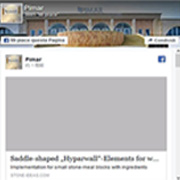Specifications and Applications of UHF Connectors

The UHF connector is a threaded coaxial connector developed by Amphenol engineers in the 1930s. They named these connectors when the UHF frequency range was considered to be 300MHz and higher. Despite the name, modern UHF connectors are used for low-frequency applications. Originally used in radio broadcasting, UHF connectors were designed in relation to banana plugs.
Physical specifications of UHF connectors
UHF connectors feature separate male and female RF connectors that are screw coupled to form a mating connection. UHF connectors do have a specific standard, but most manufacturers implement compatible designs that can accommodate a range of coaxial cable sizes.
PL-259 and SO-239
These old signal team nomenclatures refer to a popular UHF plug (PL-259) and socket (SO-239). The SO-239 socket also accepts banana plugs, and various inter-series UHF adapters are available for efficient connection. Alternative names are Navy Type 49190 (plug) and 49194 (socket). These military terms are largely no longer used.
The body of the UHF connector is made of machined nickel-plated brass with Teflon insulators. While it's durable and easy to handle and pair, it's not weatherproof, limiting its applications. The outer diameter of the mating connector is usually 18mm but may vary.
Connectors have 5⁄8" 24 TPI UNEF standard threads
Male UHF connectors have female threads and brass conductor pins
Female UHF connectors have male threads and brass receptacles.
UHF connectors are rated for over 500 mating cycles.
Electrical specifications for UHF connectors
UHF connectors have non-constant impedance, which can make their use with some radio circuits challenging. Non-constant surge impedance also limits its use to LF, HF, and low VHF frequencies. Differences in UHF female connectors and design and performance are often responsible for any surges.
The following are other typical electrical characteristics of UHF connectors:
Frequency range: 0 to 500MHz
VSWR: 1.25
Working voltage: 750 volts
Insulation resistance: 5000 megohms
Contact resistance: 5mW
Precise electrical specifications are specific to each type and manufacturer of UHF connectors.
Application of UHF connectors
This is a cost-effective, rugged RF connector for general purpose use. It performs best at frequencies below 200 MHz. Its performance degrades significantly above 500MHz. Below are some of its main contemporary applications.
Citizen band radio/amateur radio
Mobile radio
Landing and ground control aviation systems and hardware
CCTV
Public address system
Ship-to-shore communications / maritime VHF
Cable assemblies
LF, HF, and some VHF antennas
Civil defense
Due to its inconsistency, users often use inter-series adapters to replace UHF connectors with BNC or N connectors.
The above briefly introduces the physical specifications and applications of UHF connectors. If you want to buy antenna connectors, please contact us.
SOMI is a professional custom antenna accessories manufacturer. We have our own engineers, so we can design and produce products according to customers' requirements. All products are produced by automatic machines and thoroughly tested to ensure the quality of our products. We have adopted the ISO9001:2008 quality management system as the rule for all our company activities. Some products have passed CE certification.


